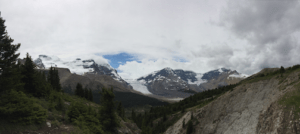
PROCEEDINGS OF THE NATIONAL ACADEMY OF SCIENCES—An overland route proposed to be key to the initial peopling of the Americas would not have been available, according to a study*. The “Ice-Free Corridor” (IFC) model for the first peopling of the Americas suggests that an opening between the margins of the Cordilleran and Laurentide ice sheets enabled travel from Beringia to the Great Plains. However, uncertainty about the dating of the first opening of the IFC has made the model’s accuracy difficult to assess. Jorie Clark and colleagues used 64 beryllium-isotope surface exposure ages taken from six locations spanning 1,200 km along the Cordilleran-Laurentide ice sheet suture zone to directly date the opening of the IFC. At each of the sites, the authors sampled glacially transported boulders to date the rocks’ exposure to cosmic rays at the onset of ice-free conditions. The results suggest that the IFC did not fully open until around 13,800 years ago. The authors conclude that the IFC would not have been available as a migration route for the first peopling of the Americas, which occurred before 15,600 years ago based on current archaeological and ancient genomic evidence. According to the authors, a more plausible migration route is along the Canadian coast following the retreat of the western margin of the Cordilleran ice sheet.
_________________________________
Article Source: PNAS news release
*“The age of the opening of the Ice-Free Corridor and implications for the peopling of the Americas,” by Jorie Clark et al., Proceedings of the National Academy of Sciences, 21-Mar-2022. https://www.pnas.org/cgi/doi/10.1073/pnas.2118558119
Cover Image, Top Left: The central Rocky Mountains in Alberta, Canada. Anders Carlson
_________________________________
Advertisement




